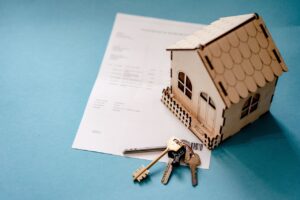Floods are one of nature’s most devastating forces, capable of causing significant damage to homes and properties. When a flood strikes, it’s essential to act swiftly to minimize the destruction and ensure a safe environment for your loved ones. In this article, we will discuss emergency flood repair, offering essential guidance on what to do when faced with the aftermath of a flood.
Understanding the Impact of Flooding
1. Water Damage
Floodwater can infiltrate your home, causing immediate damage to your possessions, structural elements, and electrical systems. The longer water sits, the more extensive the damage becomes.
2. Health Hazards
Floodwater is often contaminated with bacteria and harmful substances. Prolonged exposure can pose significant health risks. It’s crucial to take precautions.
The First Steps After a Flood
3. Ensure Safety
Before anything else, ensure your safety. Turn off the electricity and gas to avoid potential hazards. If your home is severely flooded, it may be best to evacuate temporarily.
4. Contact Your Insurance Company
Notify your insurance provider as soon as possible to initiate the claims process. Document the damage by taking photos and making a list of damaged items.
5. Remove Water
The sooner you remove standing water, the better. You can use pumps or contact professional water removal services. The key is to prevent further damage to your property.
Mold Prevention
6. Address Humidity
High humidity levels can lead to mold growth. Use dehumidifiers to reduce moisture levels and open windows to improve ventilation.
7. Remove Wet Materials
Any soaked materials, such as carpeting, drywall, and insulation, should be removed to prevent mold infestation. Mold can start growing within 24-48 hours.
Structural Assessment
8. Inspect the Foundation
After the water is removed, assess the structural integrity of your home. Pay attention to the foundation, walls, and ceilings for any signs of damage.
9. Electrical and HVAC Systems
Have an electrician inspect your electrical system before turning it back on. Likewise, have an HVAC professional check your heating and cooling systems.
Cleaning and Sanitizing
10. Disinfection
Thoroughly clean and disinfect all areas that came into contact with floodwater. Use appropriate cleaning agents to kill any bacteria and contaminants.
11. Personal Protective Equipment (PPE)
When cleaning up, wear appropriate PPE, including gloves and masks, to protect yourself from contaminants.
Repair and Restoration
12. Structural Repairs
Engage a contractor to assess and repair structural damage. This may include repairing walls, ceilings, and the roof.
13. Electrical and Plumbing
Make sure your electrical and plumbing systems are in good working order. Repair or replace any damaged components.
Flooring and Finishes
14. Flooring Replacement
Consider replacing flooring materials like carpet and wood that may have been irreparably damaged. Choose flood-resistant materials for future protection.
15. Paint and Finishing
After addressing structural and safety concerns, repaint and refinish your home. Fresh paint can provide a clean and welcoming environment.
Conclusion
Floods can be overwhelming and destructive, but with prompt and appropriate action, you can minimize the damage and restore your home to its former glory. Always follow safety guidelines and, when in doubt, consult with professionals to ensure your home is safe and secure.
In the face of a flood, remember that your safety and that of your family are of utmost importance. It’s also essential to maintain communication with your insurance company to navigate the claims process. Through quick thinking and diligent effort, you can recover from the aftermath of a flood and rebuild your life.
Stay safe and be prepared. Prevention is the best defense against flooding, so consider investing in flood prevention measures such as flood barriers and insurance. With the right precautions and a swift response, you can protect your home and your family from the worst effects of a flood.














